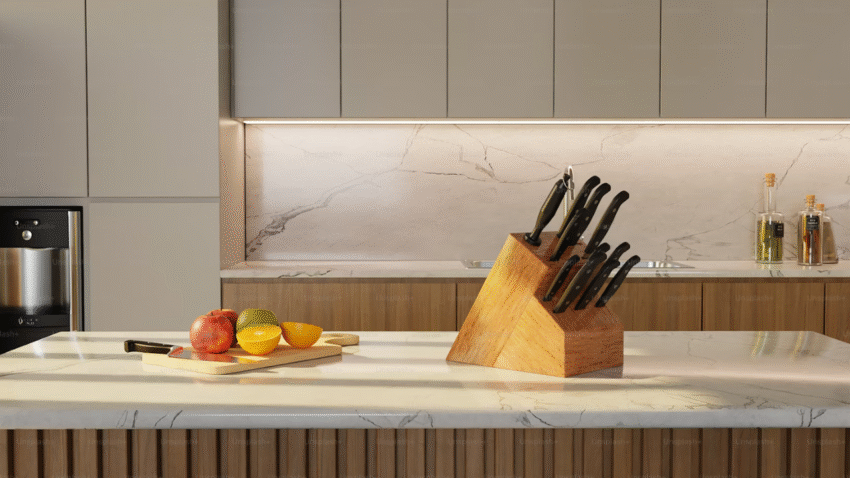Introduction
Got a cast iron pan but unsure how to care for it? You’re not alone. Cast iron cookware can last generations—but only with proper cleaning and seasoning. Whether you’re reviving an old skillet or maintaining a new one, this guide will teach you how to clean and season a cast iron pan so it stays nonstick, rust-free, and ready for anything. With a few simple steps, you’ll make cast iron your most trusted kitchen tool.
Why Cast Iron Care Matters in the Kitchen
Cast iron is beloved for its durability, even heat distribution, and natural nonstick properties. But unlike stainless steel or nonstick pans, it requires a little extra TLC to stay in top shape. Proper cleaning and seasoning:
- Prevents rust and damage from moisture or neglect
- Maintains the nonstick surface for better cooking results
- Extends the life of the pan, turning it into a long-term kitchen investment
- Enhances flavor as the seasoning builds over time
A well-seasoned cast iron skillet improves with age—but only if it’s properly cleaned and maintained.
Step-by-Step Guide to Cleaning a Cast Iron Pan
Here’s how to clean your pan without stripping away its seasoning or damaging the surface.
1. Clean Immediately After Use
Right after cooking, let the pan cool slightly, then clean while it’s still warm.
- Wipe out food particles with a paper towel or soft sponge
- Rinse with warm water (no soap needed if the seasoning is strong)
Kitchen Tip: Don’t soak the pan—standing water encourages rust.
2. Use a Scrubber for Stuck-On Bits
For tougher residue, use a gentle scrubber like:
- A stiff-bristled brush
- A chainmail cast iron scrubber
- Kosher salt + a bit of warm water as a natural abrasive
Warning: Avoid steel wool or soap unless you’re planning to re-season afterward.
3. Dry Thoroughly
Once clean, dry the pan immediately to prevent rust.
- Use a towel to wipe dry
- Place on a low stovetop burner for a few minutes to evaporate remaining moisture
Reminder: Never air-dry cast iron.
Step-by-Step Guide to Seasoning a Cast Iron Pan
Seasoning is what gives cast iron its slick, nonstick surface and protects it from rust.
1. Apply a Thin Layer of Oil
Choose a neutral oil with a high smoke point:
- Flaxseed oil
- Grapeseed oil
- Canola or vegetable oil
Add a few drops to the pan and rub a very thin layer over the entire surface—including the bottom and handle.
Pro Tip: Use a lint-free cloth or paper towel to spread the oil evenly.
2. Wipe Off Excess Oil
Too much oil can lead to sticky buildup. After coating, wipe the pan with a clean cloth until it looks dry.
- You should barely see a shine
- No visible oil puddles or streaks
Kitchen Tip: Less is more when it comes to seasoning.
3. Bake the Pan Upside Down
Preheat your oven to 450–500°F (230–260°C). Place a sheet of foil on the bottom rack to catch drips, then:
- Place the oiled skillet upside down on the middle rack
- Bake for 1 hour
- Let it cool in the oven afterward
Reminder: This process polymerizes the oil, bonding it to the metal to form a protective layer.
4. Repeat if Necessary
For new or rusty pans, repeat the oil-and-bake process 2–3 times to build a solid seasoning base.
- The more layers, the better the nonstick surface
- Over time, regular cooking with oils will continue to build seasoning naturally
Common Mistakes to Avoid
Avoid these common pitfalls to keep your cast iron in top shape:
Mistake 1: Using Soap or the Dishwasher
Solution: Skip the soap unless you’re starting over with seasoning. Never put cast iron in the dishwasher—it strips the protective coating.
Mistake 2: Letting It Air Dry
Solution: Always dry thoroughly with a towel and heat to prevent rust.
Mistake 3: Applying Too Much Oil During Seasoning
Solution: Use a very thin layer and wipe off excess. Thick layers turn sticky or gummy.
Mistake 4: Cooking Acidic Foods Too Soon
Solution: Avoid tomato sauces, vinegar, or wine in a freshly seasoned pan—they can break down the coating. Wait until the seasoning is well established.
Mistake 5: Storing with the Lid On
Solution: Store your cast iron uncovered or with a paper towel inside to absorb moisture and prevent rust.
Extra Tips & Kitchen Hacks
Make the most of your cast iron care routine with these bonus tips:
Tip 1: Cook with Fatty Foods to Boost Seasoning
Bacon, sausage, or burgers are excellent for helping build up seasoning during the early stages of use.
Tip 2: Use It Often
Frequent use helps maintain and improve seasoning. The more you cook in it, the better it gets.
Tip 3: Keep a Dedicated Cloth for Oil Application
Store a lint-free cloth or towel just for seasoning your cast iron. It makes the process quicker and more consistent.
Next Task: Once your skillet is seasoned and ready, try making cornbread, seared steaks, or skillet-fried potatoes for best results.
Conclusion
Cleaning and seasoning a cast iron pan may seem intimidating at first, but it’s actually simple and rewarding. With gentle cleaning, thorough drying, and occasional seasoning, your cast iron will stay rust-free and nonstick for years—maybe even generations. Avoid common mistakes, use a light hand with oil, and keep your pan in regular rotation. The more love you give it, the more it will give back in the form of delicious, evenly cooked meals.
Bookmark this guide to keep your cast iron in top shape for every meal!
